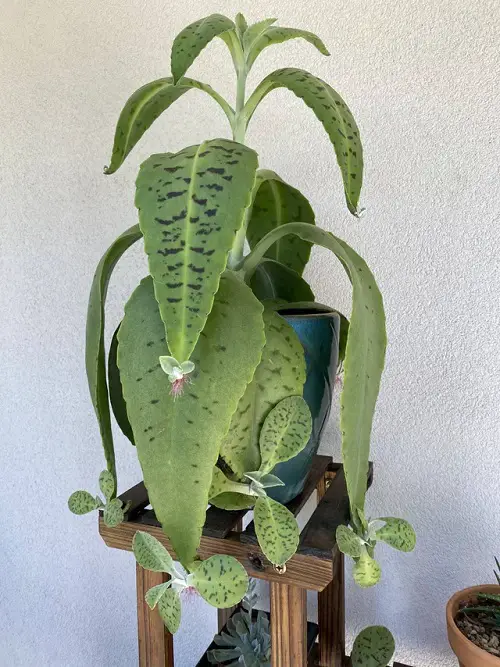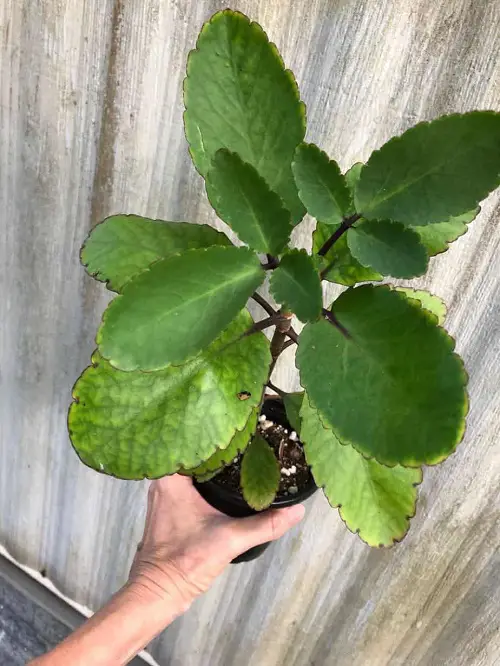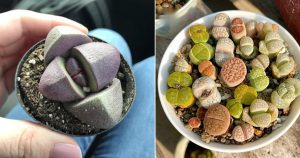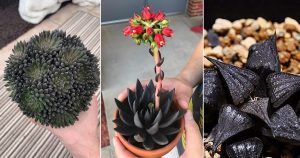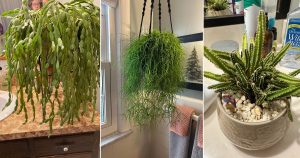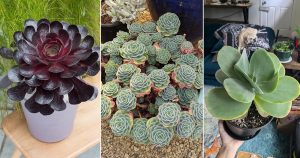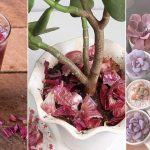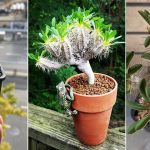We’ve got some beautiful Mother of Thousands Varieties that are really hard to miss! Let’s check them out!
The Mother of Thousands plant is truly special, belonging to the Kalanchoe family. It goes by many names like Palm Tree Bryophyllum, Mexican Hat Plant, Alligator Plant, Devil’s Backbone, Chandelier Plant, and Mother of Millions. etc. Let’s check out some of the Mother of Thousands varieties, each with its own unique specialities.
Mother of Thousands Plant Varieties
These plants can spread quickly and are toxic, so it’s best to keep them in containers.
1. Palm Tree Bryophyllum
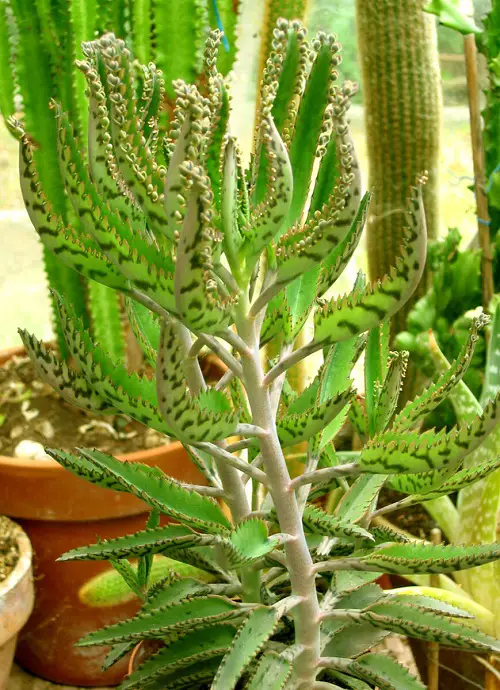
Botanical Name: Kalanchoe daigremontiana
This slim succulent can grow up to 16 inches. Its leaves are like little green triangles with spots on them, making it look like a tiny palm tree. It’s really tough and hardly ever gets bugs bothering it, the best part is these plants doesn’t need much water and ever fertilizer so it’s great for anyone’s collection.
2. Chandelier Plant
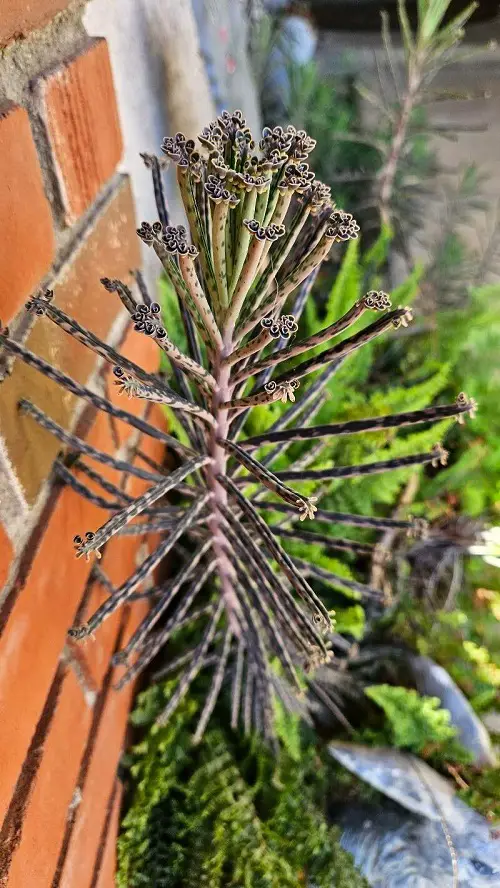
Botanical Name: Kalanchoe delagoensis
The Mother of Millions is called that because it makes lots of little baby plants all by itself. It grows tiny plantlets on the tips of its leaves, which fall off and grow into new plants. It’s tough and can live in lots of different places, but sometimes it spreads too much and becomes invasive.
3. Lavender Scallops
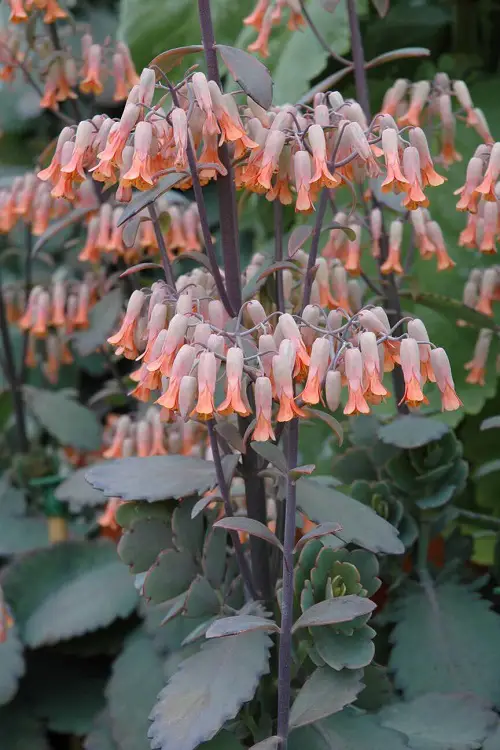
Botanical Name: Kalanchoe fedtschenkoi
Lavender Scallops has shiny green leaves that sometimes turn pink or red when they get lots of sun. Its flowers are shaped like bells and come in purple or reddish-brown clusters. People love having it indoors or in tropical gardens as these plants have no need of watering.
4. Donkey Ears
Botanical Name: Kalanchoe gastonis-bonnieri
The Tree of Life or also popular as Donkey ears are special because it has big clusters of light green leaves with purple spots. It also grows waxy red candle-like things that look amazing in gardens or inside your home. Donkey ears plant doesn’t produce a lot of plantlets from its leaves, but it does produce some.
5. Mother of Millions
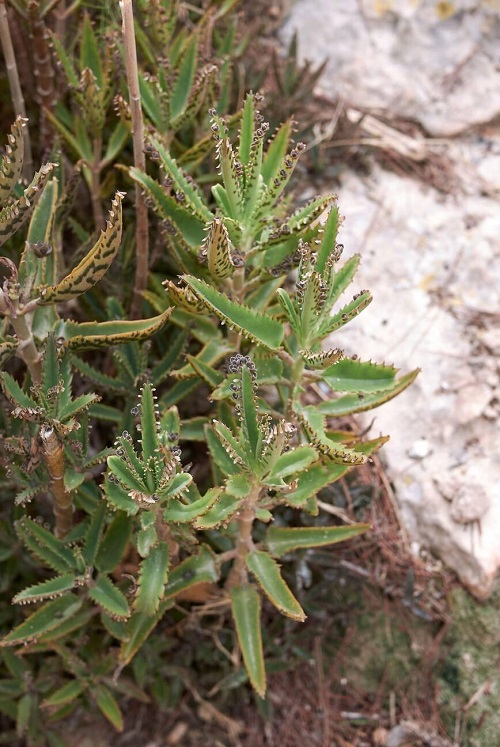
Botanical Name: Kalanchoe х houghtonii
This one’s called the Mother of Millions hybrid because it has V-shaped leaves and grows really well. Originally from Madagascar, it’s found all over warm places now. But be careful, it’s toxic to people and animals.
6. Life Plant
Botanical Name: Kalanchoe pinnata
The Life Plant is famous for making lots of baby plants. It grows tiny ones along the edges of its leaves, even if they’re not attached to the main plant. Its flowers look like little bells and make it a favorite for gardens, even though it can spread a bit too much sometimes.
7. Panda Plant
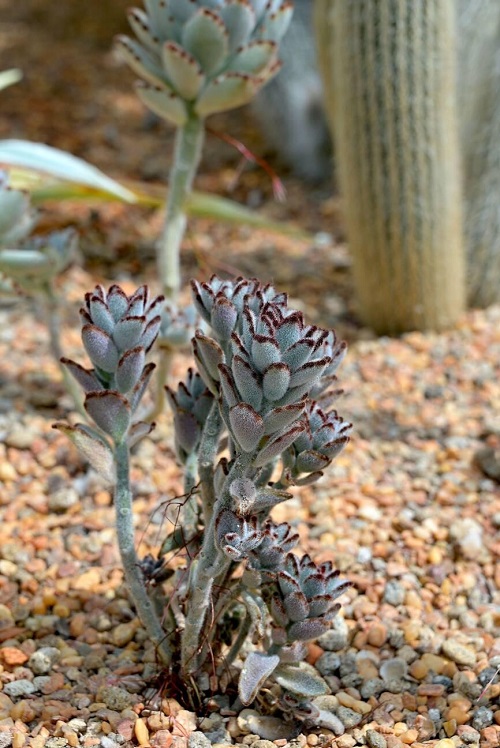
Botanical Name: Kalanchoe tomentosa
Known as the Panda Plant or Pussy Ears, this variety has fuzzy, silver-green leaves with brownish-red tips which also look burnt. It’s a hit for indoor gardening, thanks to its neat, bushy growth, bringing a playful vibe to any succulent collection.
8. Mexican Hat Plant
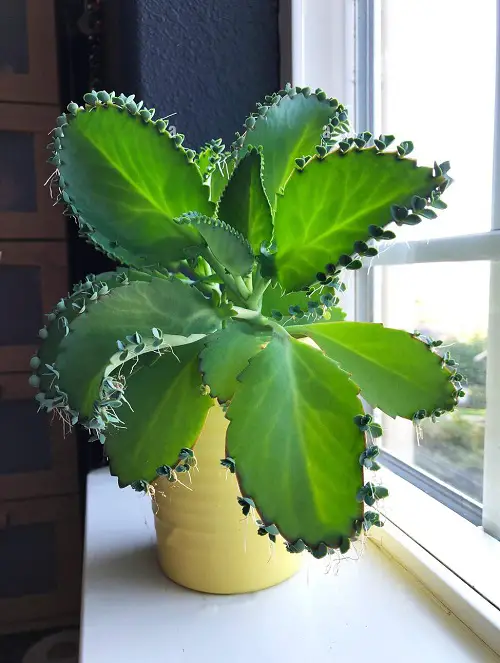
Botanical Name: Kalanchoe daigremontiana ‘Mexican Hat Plant’
The Mexican Hat Plant gets its name because its flowers look just like the wide-brimmed sombrero hats worn in Mexico. Its leaves spiral gracefully, it is perfect for any garden if grown in container.
It’s best if the surface of the plant doesn’t touch the soil, so if its plantlets fall, they won’t spread and become invasive. Plus, like its counterparts, it’s low-maintenance and effortlessly enhances the charm of its surroundings.
9. Laetivirens Kalanchoe
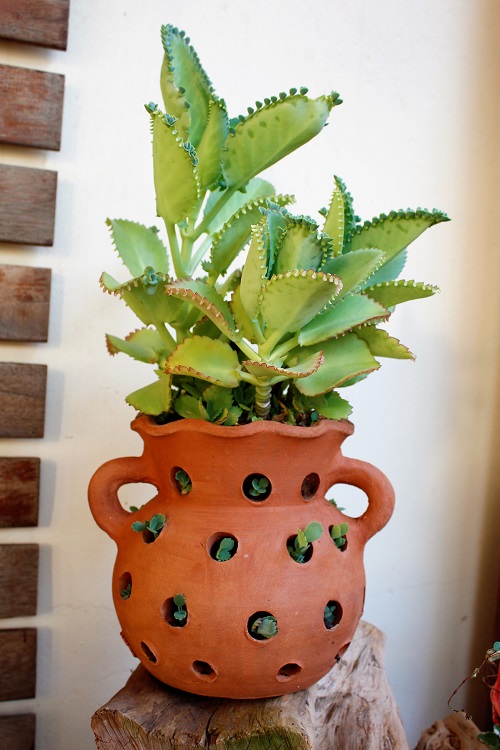
Botanical Name: Kalanchoe laetivirens
Kalanchoe laetivirens is a unique succulent plant with big bluish-green leaves, each up to 8 inches long and 3 inches wide. It’s got these tiny baby plants growing all along the edges, which makes it look really special. Laetivirens Kalanchoe also known as the Big Momma which needs plenty of sunlight and well drained soil.

